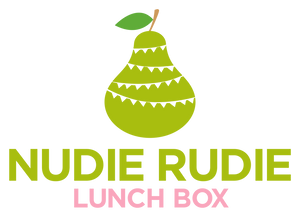· By Julia Boase
Managing the Halloween lolly stash - A Paediatric Dietitian's Guide
Halloween, love it or not, has undeniably made its mark in Australia in recent years. Even my own kids have fully embraced the concept, and judging by the spook-tacular decorations in my neighbourhood, it seems like many families are onboard with the Halloween traditions, once considered rare Down Under.
Trick-or-treating, a Halloween staple, is a definite favourite of my children. While I'm not exactly thrilled about the influx of sugary goodies that tag along (I don't detest it either), I cherish the sense of community it fosters within our neighbourhood.
The big question is, how do we manage the aftermath of the Halloween lolly stash? With two decades of experience as a paediatric dietitian, I approach child feeding from the vantage point of Ellyn Satter's "division of responsibility." I also advocate for intuitive eating, believing it to be the most well-supported approach in fostering a lifelong healthy relationship with food for kids (1,2). Here's my take on managing the Halloween candy stash:
I make it a point to ensure my kids have had a substantial meal or snack before heading out for trick-or-treating. This not only prevents the possibility of an upset stomach but also helps stave off any potential constipation the next day.
I refrain from stressing or explicitly mentioning the impending sugar overload—it's Halloween, after all. Apart from occasions like Easter, Christmas, and the goody bags from parties, there aren't many times in the year when my kids get a free pass to indulge in candies and chocolates. In the grand scheme of their nutrition, it contributes a minuscule fraction.
I steer clear of labelling lollies as "bad" or "unhealthy," maintaining a neutral stance. I do, however, discuss the importance of dental hygiene, emphasising the risks of cavities that come with excessive sugar lingering on their teeth, prompting a thorough brush before bedtime.
I don't enforce any limits on their candy consumption during or after the event. I allow them to gauge their own appetite and desires, letting them listen to their bodies. This approach encourages them to recognise when they've had enough and helps prevent overindulgence driven by the fear of impending restriction.
My philosophy revolves around making these treats feel ordinary, not forbidden. I want my children to view them as everyday items, rather than as something exclusive or special. This approach nurtures a healthy attitude towards indulgence and prevents the urge to binge due to a perceived scarcity.
This strategy has proved effective over the years. For instance, after a trip to the Royal Adelaide Show in early September, my kids came home with several lolly show bags. Initially, they consumed a fair share, but now most of it sits untouched on their bunk bed. It's not a big deal to them.
Excessive restriction and creating a sense of taboo around "treat" foods often leads children to seek them out even more (1,2). A more balanced approach involves incorporating these foods regularly, adhering to the 80/20 rule—where 80% of the time, we prioritise nutritionally rich foods, and 20% of the time, we eat foods we simply enjoy. I embody this approach, enjoying ice cream or chocolate with my kids on a regular bass, ensuring that no food is off-limits in our household. I maintain an open-minded stance toward any new foods they wish to try, be it healthy or not.
So, this Halloween, don't stress over the sugar surge. Use it as an opportunity for your kids to learn about their bodies and their relationship with these foods (and yes sometimes kids need to feel sick in order to learn that they’ve gone past their comfortable stop point). and don’t forget to clean their teeth before bed!
References:
1. Fisher, Jennifer Orlet, and Leann Lipps Birch. "Restricting access to palatable foods affects children's behavioral response, food selection, and intake." The American journal of clinical nutrition 69.6 (1999): 1264-1272.
2. Rollins, B. Y., et al. "Alternatives to restrictive feeding practices to promote self‐regulation in childhood: A developmental perspective." Pediatric obesity 11.5 (2016): 326-332.
